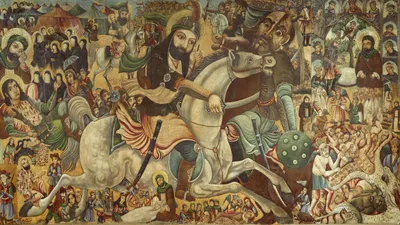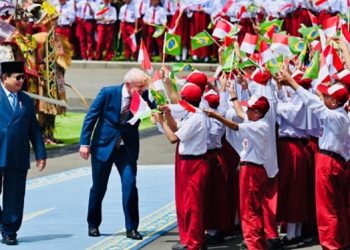Jakarta, Indonesia Sentinel — The fall of the Assad family’s 54-year rule in Syria has raised pressing questions about the future of the Alawite sect, a Shia offshoot, in a country predominantly Sunni. Emerging as a significant force following Syria’s independence from France in 1946, the Alawites secured influential positions in politics and the military.
Their dominance began with Hafez al-Assad, who assumed the presidency after a 1963 military coup and ruled until his death in 2000. His son, Bashar al-Assad, continued the authoritarian regime until its recent collapse, marking the end of Alawite supremacy in Syrian governance.
Who Are the Alawites?
The Alawite sect differs substantially from mainstream Sunni and Shia Islam. While rooted in Shia traditions, Alawite theology incorporates unique beliefs, including the deification of Ali, the first Shia Imam, and the concept of reincarnation. Their interpretations of Islamic pillars are symbolic, and they adopt practices resembling Christianity, such as celebrating Christmas and communal rites.
This theological distinctiveness and secrecy have historically marginalized Alawites, with many Sunni and Shia clerics labeling them heretical. To counter this marginalization, the Alawites aligned with regimes offering protection, as exemplified by their association with the Assads.
Historically referred to as Nusayris, the Alawites emphasize esoteric practices, reincarnation, and symbolic readings of Islamic tenets. Unlike traditional Muslims, they abstain from strict adherence to the Five Pillars of Islam and engage in distinct rituals, such as the ceremonial consumption of wine.
Concentrated along Syria’s Mediterranean coast in regions like Latakia and Tartous, the Alawites constitute 10-13% of the population. Despite being a minority, their ascent under the Assad regime turned them into key players in Syria’s military and political elite.
The Assad Regime and Alawite Power
The secular Ba’ath Party, founded in 1947, provided a platform for marginalized communities, including the Alawites, to rise to prominence. After Syria’s independence, Alawites gained dominance in the armed forces and political movements, transitioning from a persecuted minority to the backbone of Assad’s authoritarian regime.
Hafez al-Assad’s Alawite background facilitated the sect’s influence in the military and security apparatus. During the Syrian Civil War, Alawites largely supported Assad, deepening their ties to the regime. Loyalist militias like the Shabbiha played a pivotal role in suppressing Sunni-led uprisings, further entrenching the sect’s association with the Assads.
Lamaholot Tribe Lewak Tapo Ritual: A Mystical Tradition to Uncover the Cause of Death
Alawite Sect Challenges After Assad
The ousting of Bashar al-Assad has left the Alawite community in a state of anxiety and uncertainty. In Alawite strongholds such as Qardaha, Assad’s hometown, loyalists mourn the end of their decades-long minority rule in a Sunni-majority nation.
Their fears are not unfounded, given historical examples of retribution in the Middle East. After Iran’s 1979 Islamic Revolution, Shah loyalists faced executions, while Libya’s post-Gaddafi era saw widespread imprisonment of regime supporters.
The Alawites’ deep entanglement with Assad’s rule makes them particularly vulnerable to potential reprisals, despite early assurances from rebel leaders advocating restraint.
What Lies Ahead for Syria’s Alawites?
The fall of the Assad regime could reshape the Alawite community’s role in Syrian society. While some foresee gradual integration into a more inclusive political framework, others predict heightened vulnerability due to their prolonged association with authoritarianism.
For the Alawites, the challenge lies in distancing themselves from the Assad legacy while navigating a Sunni-majority political landscape. If Syria’s new leadership prioritizes reconciliation and inclusivity, it could alleviate fears of retribution and foster national unity. Conversely, punitive measures risk deepening sectarian divides and perpetuating cycles of violence.
The future of Syria’s Alawites hinges on their ability to redefine their identity beyond the Assad regime and the willingness of the broader Syrian society to embrace a path of reconciliation.

























